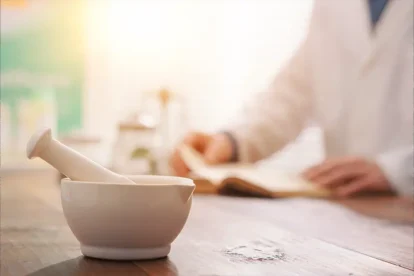I Contain Multitudes: The Rising Prevalence of Polydrug Use and Implications for Treatment

“When people say, ‘I’m a heroin user’ or ‘I’m a cocaine user, I’m always very skeptical.” Allison says. “Okay, so you use cocaine and what else?” Allison, 26, is a nursing graduate student, but her knowledge of how drugs are commonly used doesn’t come from medical textbooks or nursing rounds. “For me and my friends, using a single drug in isolation was never the norm. A typical night would start out with a capsule of MDMA at about 11pm, followed by another about an hour or two later,” she tells me, “But due to the diminishing returns of MDMA, by 3 or 4 in the morning we had to move on to something else, usually cocaine. And, of course, we’re drinking the whole time. By the time the sun came up we would pass around pot, Xanax, or Klonopin so we would be tired enough to stop doing coke and sleep.”
Although Allison was a high-functioning addict, her parents became concerned when they found a bottle of Xanax in her room: the label bore someone else’s name. “They told me they had found drugs in my room and my immediate thought was, ‘Which ones?’ When they showed me the Xanax I felt like I had dodged a bullet; it’s so easy to say, ‘I need it for giving presentations in class,’ or whatever,” she says. While the incident appeared to quietly resolve on the surface due to some quick thinking on Allison’s part, underneath it spurred some frightening revelations. “I started imagining what would happen if they found something worse and the idea just broke my heart. The look on my mom’s face … I also realized that maybe the fact that I was using four, five, six drugs at a time and in ever-increasing amounts was a problem. But by the time you figure that out, how do you isolate it? Do you call up a rehab and say ‘I might be addicted to at least three drugs, I don’t even know’?” In the following months, Allison and at least two of her friends did just that, as they realized the escalating dangers of their polydrug use. Now sober for five years, she says, “The people I met in treatment reinforced that our practices were not unusual. I would say they’re very typical.”
The How and Why of Polydrug Use
According to substance use experts, Allison is right. Multiple studies suggest that polydrug use is as or more prevalent than monodrug use, particularly among young adults and those involved in certain subcultures such as the clubbing scene. Typically, polydrug use is undertaken for one of the following purposes:
- To deliberately augment the effect of one or more substance, such as in cases of simultaneous opioid-benzodiazepine or heroin-crack use.
- To reduce withdrawal symptoms and ease the process of coming down, such as smoking marijuana or taking benzodiazepines after MDMA, meth, or cocaine use.
- To increase intoxication, regardless of whether or not the drugs act synergistically, antagonistically, or produce simultaneous but unrelated effects.
However, authors of Key Concepts in Drugs and Society point out that, for many, polydrug use is about more than simply combining drug A with drug B; it’s a way of modulating drug use and creating specific experiences in response to a host of complex and dynamic factors:
Polydrug use is widespread and can be considered a not unusual attempt by drug users to balance the effects of different drugs and to manage the fluctuations in availability, price, and purity of their preferred psychoactive substance through substitute displacement, alongside changes in legislation, enforcement, and fashion.
These changing patterns of drug availability, popularity, and legal status, along with increased access to information regarding drug combinations in both real-life and virtual communities, have led to a marked rise in polydrug use and a growing prevalence of dangerous drug cocktails. These combinations may be particularly hazardous at a time of increased drug substitution, contamination, and potency, along with the continuous emergence of unknown “designer” drugs. The vast majority of users don’t have the information necessary to take calculated risks because they do not know exactly what they are taking or how it will react with other substances, often resulting in unexpected and unwanted effects. Despite this, polydrug use rarely receives the public attention that is typically given to monodrug use and, more alarmingly, is not adequately acknowledged within drug policy or many addiction treatment programs.
Augmenting Chemical Risk
Just as polydrug use can augment the perceived benefits of each substance, it also significantly heightens the dangers, often via the very mechanism that makes the combination so attractive. Simultaneous use of opiates and cocaine, for example, augments the negative cardiovascular effects caused by cocaine while increasing the risk of respiratory depression and overdose. Meanwhile, pre-medicating with benzodiazepines prior to opiate use “enhances feelings of euphoria and reinforces neurochemical rewards,” providing users who have developed a high tolerance to opiates with renewed highs. This heightened reaction is paired with increased potential for damage, as opiates and benzodiazepines “potentiate” each other, elevating the risk of overdose and death. Indeed, benzodiazepines are now implicated in 50-80% of heroin-related deaths. While this particular combination has received widespread media attention due to a number of high-profile opiate-benzodiazepine related deaths, other forms of polydrug use present dangers that often go unrecognized even by users themselves. As noted by the European Monitoring Centre for Drugs and Drug addiction:
Intensive alcohol use is often a major, but overlooked, component of polydrug use. For example, stimulant drugs such as cocaine may enable users to consume large quantities of alcohol over longer periods than would otherwise be possible.
As a result, users are at increased risk for alcohol poisoning and other forms of both acute and long-term alcohol-related health problems, often without realizing that they are in danger. Simultaneously, alcohol increases the concentration of cocaine in the bloodstream by 30%, prolongs psychoactive duration, and heightens the risk of cardiovascular damage. Alcohol can also cause severe interactions with a range of other prescription and street drugs, including benzodiazepines, ketamine, PCP, barbiturates, and even SSRI antidepressants.
Impairing Risk Assessment
However, chemical interactions resulting in direct physical damage are not the only concern polydrug use brings; concurrent use of multiple substances is associated with elevated behavioral risks that can have devastating consequences. Because polydrug use can augment the effects of drugs, it may exponentially decrease inhibition and impair risk assessment, leaving you vulnerable to participating in behaviors you would avoid when sober or even when on a single drug. For example, a 2005 study published in the Journal of Urban Health found that only 5% of methamphetamine-using, HIV-positive men who have sex with men used methamphetamine alone. Of the remaining 95% of subjects, 64% were regarded as heavy polydrug users. The researchers discovered that “heavy polydrug users reported significantly more high-risk sexual behaviors and tended toward higher levels of impulsivity than light polydrug users.” A similar study published in The Lancet HIV in 2014 also found that polydrug use was “strongly associated with condomless sex.” Researchers examining the impact of polydrug use on risky and antisocial behaviors in European teenagers discovered that taking two or more substance found an “incremental relationship exists between the level of involvement with polydrug use and the co-occurrence of problem behaviours,” including gambling, poor school performance, unprotected sex, trouble with police, and physical altercations. While the propensity for risk-taking may be a cause rather than an effect of polydrug taking for some, it is reasonable to assume that a significant proportion of polydrug use contributes to rather than stems from risk-taking behavior; after all, the removal of inhibitions is often an explicit part of the appeal of drugs – they let you do things you ordinarily wouldn’t do, both for better and for worse.
Toward Successful Polydrug Use Treatment
If you or someone you love is struggling with polydrug use, you may feel lost and alone, as many treatment programs focus on monodrug use and don’t appear to recognize your unique experience. In other cases, you may have tried treatment only to find yourself relapsing because your polydrug use was never adequately addressed. Unfortunately, these are common experiences, as many addiction treatment programs are not equipped or trained to successfully treat complex polydrug addictions.
At Alta Mira, our renowned treatment program has the expertise and resources to address the needs of people struggling with polydrug use. This treatment begins with our sophisticated medically supervised detox services; polydrug use can present special challenges for the withdrawal process and your detoxification experience must be tailored to your individual situation to create client-centered, symptom-driven protocols. At Alta Mira, our on-site, board-certified physicians combine cutting-edge treatments with compassionate care to ensure that you have the most positive, safe, and comfortable detox experience possible. Your length of detox is determined by your individual needs, which is particularly crucial in cases of polydrug addiction, as you may require more extensive detox duration and closer monitoring than those with monodrug addictions.
Following detox, your will participate in a personalized and comprehensive clinical program designed to support your recovery through evidence-based psychotherapy, 12-step wisdom, and holistic therapies delivered by leading professionals with the training and experience to treat polydrug addictions. The components of your treatment plan are designed with your unique situation in mind following in-depth psychological testing and clinical interviews that illuminate your emotional and behavioral struggles and strengths. Our goal is not simply to help you stop taking cocaine or drinking or smoking meth, but to uncover what you were using drugs and alcohol to escape and remove the obstacles to healing at the root. By engaging in a process of growth and discovery that fundamentally quells your addictive drive, enhances your self-awareness, and gives you the tools to navigate life sober, you can not only protect yourself against relapse, but gain the ability to live with renewed energy, purpose, and joy. Our full range of continuing care services, including our Intensive Outpatient Program and weekly alumni process groups, give you the support and structure you need to maintain and build on the gains you have made in treatment to ensure long-term sobriety and ongoing personal growth.
Alta Mira offers comprehensive treatment for people struggling with polydrug use as well as co-occurring mental health disorders and process addictions. We invite you to contact us at any time to discuss your needs and learn how we can support you on the path to healing.






